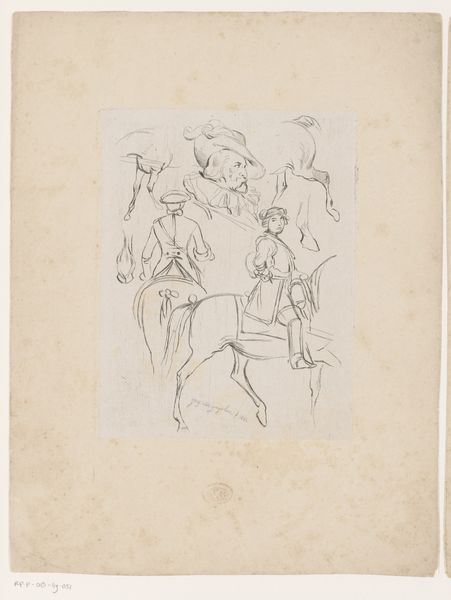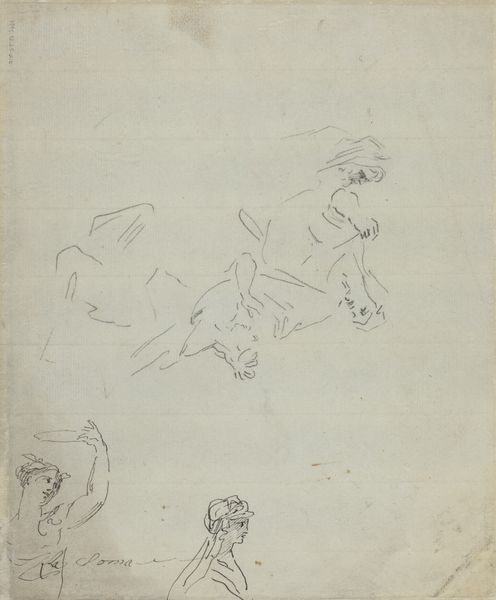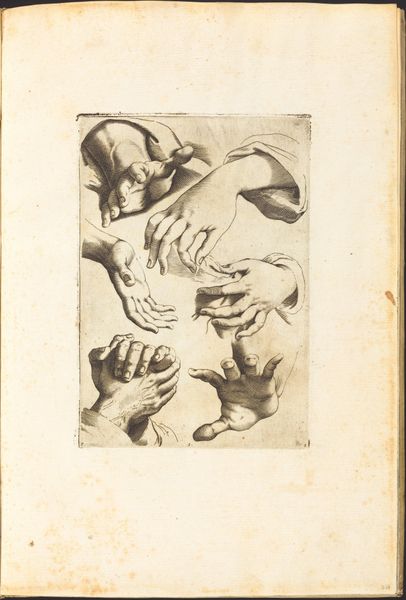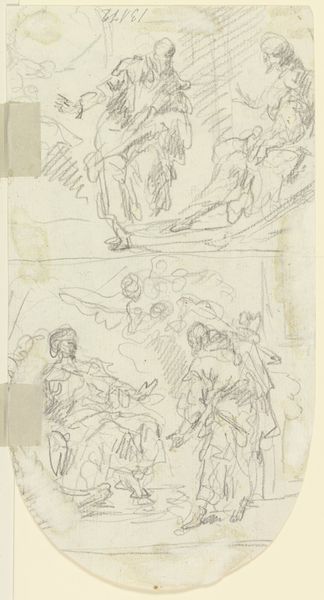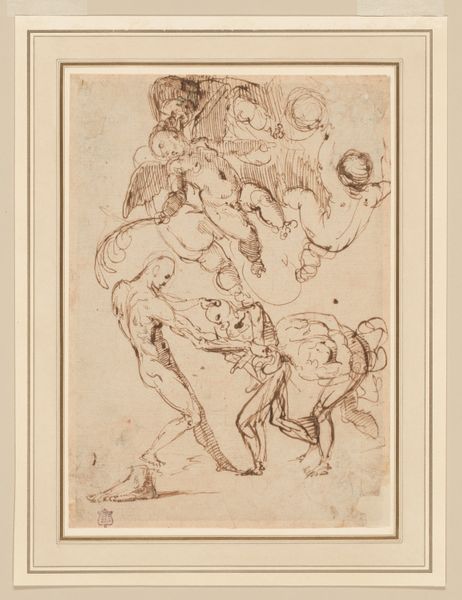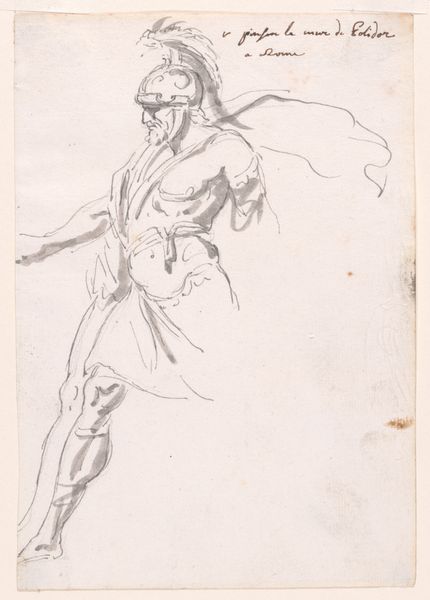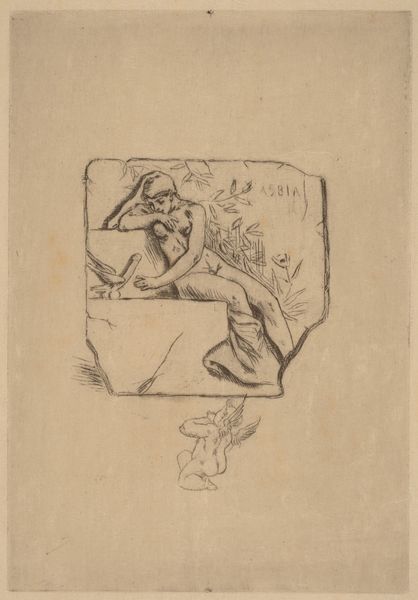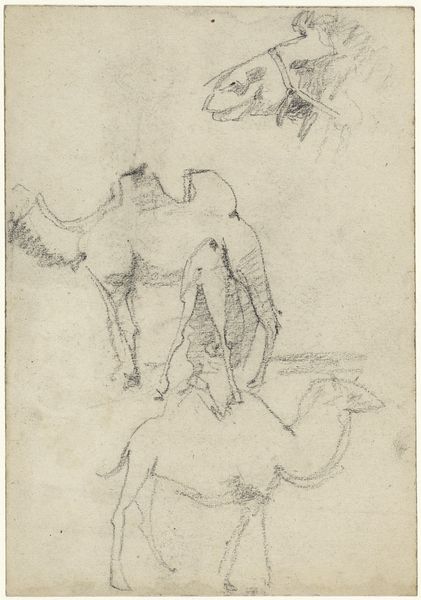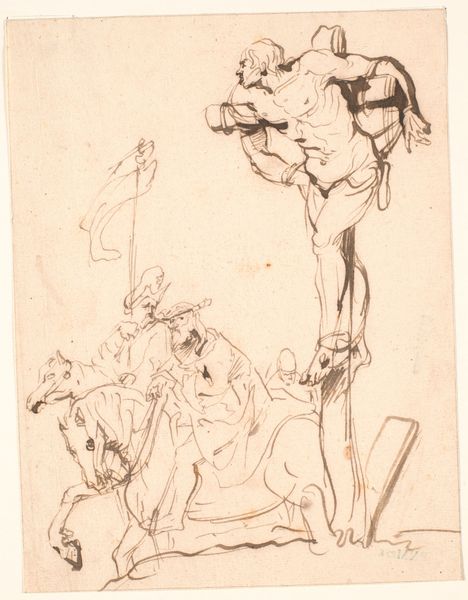
drawing, pencil
#
portrait
#
drawing
#
figuration
#
pencil
#
academic-art
#
realism
Dimensions: height 211 mm, width 155 mm
Copyright: Rijks Museum: Open Domain
Curator: Here we have “Studies van mannenfiguren en hoofden,” or “Studies of Male Figures and Heads,” completed in 1842 by Jacques Van Gingelen. Editor: My first thought is that this almost looks like a sculptor's preparatory sketch. The pencil strokes seem to map out volume and form. There's an academic air about it. Curator: Exactly. We're looking at an exercise in academic art. The composition showcases the artist's rigorous study of human anatomy and classical ideals, aligning with the prevalent artistic conventions of the 19th century. Drawing in pencil, this piece fits squarely within Realism’s devotion to precise representation. Editor: But it's not just about the artist’s hand or eye. Look at the ways these men are presented—almost stoic in their poses. Do you think there’s a particular vision of masculinity being projected here? It resonates, intentionally or not, with images of male power and dominance, that in turn influenced subsequent social narratives. Curator: Absolutely. Consider the era in which Van Gingelen worked. These "studies" aren't merely neutral observations. They participate in a broader discourse of masculinity rooted in both classical and contemporary notions of strength and intellectual prowess. It would have served to bolster social constructs of gender and male roles. Editor: It raises so many questions about the construction of ideal bodies in art. And, who gets to create these "ideals?" Even today, such depictions impact representation. Who are these figures serving? What social function did images like these have in reinforcing ideas about race, gender, class? Curator: Those are very poignant questions that encourage us to look beyond the purely aesthetic to analyze the socio-political factors shaping artistic production and consumption. It reminds us that representation is never neutral; it always participates in the construction of social power. Editor: Exactly, looking closely like this—it's a window into both the artistic process and the era’s social ideologies. Curator: A perfect synthesis between our individual perspectives, perhaps, yielding a greater understanding of the image's significance!
Comments
No comments
Be the first to comment and join the conversation on the ultimate creative platform.
